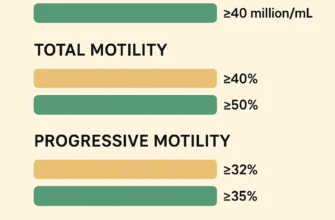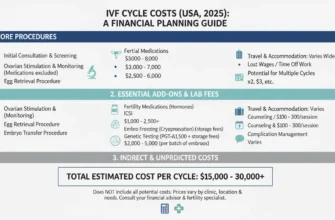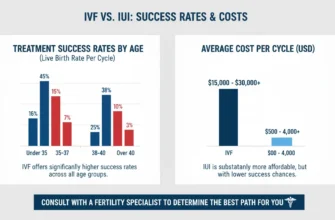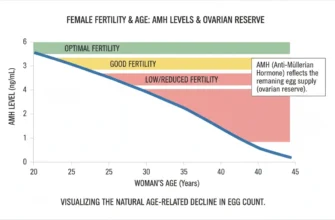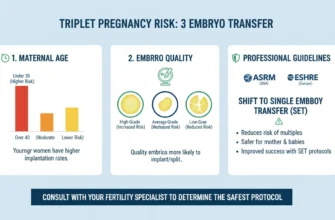Understanding Miscarriage: A Comprehensive Medical Overview
Defining Miscarriage
A miscarriage, also referred to as spontaneous abortion or early pregnancy loss, is the unexpected and spontaneous loss of a pregnancy before the fetus reaches viability. Medical definitions vary slightly by organization and region.
The World Health Organization (WHO) characterizes miscarriage as the loss of an embryo or fetus weighing 500 grams or less, which corresponds to a gestational age of approximately 20 to 22 weeks. In the United States, the medical definition specifies a gestational age of 20 weeks as the cutoff for a miscarriage. Pregnancy losses occurring after the 20th week are typically classified as stillbirths.
Key Definitions by Region:
| Classification | Global Definition (WHO) | US Definition |
|---|---|---|
| Gestational Age | Up to 22 weeks | Up to 20 weeks |
| Fetal Weight | ≤ 500 grams | Varies by state |
| Purpose | International statistics | Clinical and legal classification |
Types of Miscarriage
Miscarriages are classified into several categories based on clinical presentation:
Threatened Miscarriage – Vaginal bleeding occurs before 20 weeks with a closed cervix and evidence of fetal heart activity.
Inevitable Miscarriage – Bleeding occurs with cervical dilation, but pregnancy tissue has not yet passed.
Incomplete Miscarriage – Some pregnancy tissue has passed, but portions remain in the uterus.
Complete Miscarriage – All pregnancy tissue has been expelled and the cervix has closed.
Missed Miscarriage – The fetus has died but no miscarriage has occurred yet. Also called silent miscarriage or delayed miscarriage.
Biochemical Loss – Pregnancy loss before 6 weeks of gestation, before ultrasound confirmation.
Incidence and Statistics
Miscarriage is remarkably common. According to current data, approximately 10% to 20% of all known pregnancies in the United States end in miscarriage. However, the actual rate may be higher, as some research suggests that more than 30% of all pregnancies end in miscarriage, with many occurring before a person even knows they are pregnant.
The National Institutes of Health (NIH) estimates that approximately 1,034,000 first- and second-trimester pregnancy losses occur annually in the United States.
Timing of Pregnancy Loss:
The vast majority of miscarriages – approximately 80% – occur within the first trimester of pregnancy (before 12 weeks). Second trimester losses (between 12-20 weeks) are estimated to occur in 3-4% of pregnancies.
Causes and Risk Factors
Common Causes of Early Pregnancy Loss
The most common cause of miscarriage, particularly in the first trimester, is chromosomal abnormalities in the developing fetus. These genetic errors are responsible for approximately 50% to 67% of all first-trimester miscarriages.
Chromosomal Abnormality Types:
Recent research shows that among miscarriages with chromosomal abnormalities:
-
81-90% are numerical abnormalities (primarily autosomal trisomies)
-
54% are autosomal trisomies specifically
-
10% are polyploidy
-
10.8% are sex chromosome aneuploidies (including Turner syndrome)
-
6.6% are copy number variants
Maternal Health Conditions
Several maternal health conditions can increase miscarriage risk:
Endocrine Disorders (12-20% of recurrent pregnancy loss):
-
Uncontrolled diabetes (well-controlled diabetes is not a significant risk factor)
-
Severe hypertension
-
Thyroid diseases (hypothyroidism and hyperthyroidism)
-
Polycystic ovary syndrome (PCOS)
Autoimmune and Blood Disorders:
-
Antiphospholipid syndrome
-
Lupus
Uterine Abnormalities:
-
Structural anomalies affect approximately 2% of the population
Lifestyle Risk Factors
Multiple lifestyle factors can influence miscarriage risk:
-
Smoking
-
Alcohol consumption
-
Recreational drug use
-
Obesity (BMI > 30)
-
Certain medications
-
Advanced maternal age (significantly increases risk after 35)
Recurrent Miscarriage Risk
Recurrent miscarriage is now defined as two or more pregnancy losses, whether consecutive or not. This updated definition (as of 2025) allows for earlier investigation and support.
Risk After Successive Losses:
-
After one miscarriage: 12-20% recurrence risk
-
After two miscarriages: 29% recurrence risk (some sources cite 21-28%)
-
After three miscarriages: 36-43% recurrence risk
Importantly, these risks increase significantly with maternal age. For women aged 40-44, the recurrence risk can reach 44% after two losses and 65% after three or more losses.
Important to Remember:
These chromosomal issues are a natural and common part of human reproduction and are not caused by anything the parents did or failed to do. Most people who experience a miscarriage go on to have a successful pregnancy in the future, with approximately 87% of women who have had a miscarriage achieving a successful subsequent pregnancy.
Signs and Symptoms
Common Symptoms of Miscarriage
Vaginal Bleeding
-
Light spotting to heavy bleeding with clots
-
Important note: Up to 40% of pregnant individuals experience some bleeding in the first trimester and go on to have successful pregnancies
Cramping
-
Lower abdominal pain ranging from mild to severe
-
Similar to menstrual cramps
Back Pain
-
Persistent dull ache in lower back
Other Signs:
-
Passing tissue or clots
-
Sudden disappearance of pregnancy symptoms
-
Fluid discharge from the vagina
When to Seek Medical Attention
Immediate Emergency Signs:
-
Heavy bleeding soaking through more than two pads per hour for 2+ hours
-
Severe abdominal pain
-
Pain localized to one side (may indicate ectopic pregnancy)
-
Dizziness or fainting
-
Fever higher than 100.4°F (38°C)
-
Chills or foul-smelling discharge
Contact Your Doctor:
-
Any vaginal bleeding during pregnancy
-
Passing of tissue or clots
-
Sudden disappearance of pregnancy symptoms
-
Persistent cramping
Diagnosis and Medical Management
Diagnostic Procedures
Ultrasound Examination
The primary method of diagnosis is transvaginal or abdominal ultrasound. This allows clinicians to:
-
Visualize the uterus and gestational sac
-
Check for fetal heartbeat
-
Confirm intrauterine pregnancy
-
Estimate gestational age accurately
Blood Tests
Serial hCG (human chorionic gonadotropin) measurements help assess pregnancy viability:
-
In healthy pregnancies, hCG levels should double approximately every 48-72 hours in early pregnancy (first 4-6 weeks)
-
For hCG levels below 1,200 mIU/ml, doubling every 48-72 hours is typical
-
Between 1,200-6,000 mIU/ml, doubling may take 72-96 hours
-
Above 6,000 mIU/ml, doubling can take over 96 hours
-
A rise of at least 35% over 48 hours can still be considered normal
-
Falling or plateauing levels indicate potential miscarriage
Treatment Options
Three main approaches are available for managing miscarriage, each with distinct success rates and considerations:
| Treatment Option | Success Rate | Description | Best For |
|---|---|---|---|
| Expectant Management | 58-91% | “Watchful waiting” – allowing the body to naturally expel pregnancy tissue | Incomplete miscarriage (80-90% success); women who prefer natural process |
| Medical Management | 81-95% | Using medications (mifepristone and misoprostol) to help expel tissue | Those wanting to avoid surgery but desiring more control over timing |
| Surgical Management | 97-98% | Dilation and curettage (D&C) or vacuum aspiration to remove tissue | Early fetal demise; when faster resolution needed; after failed expectant/medical management |
Expectant management shows varying effectiveness:
-
Incomplete miscarriage: 80-91% success
-
Missed miscarriage: 66-76% success
-
Anembryonic pregnancy: 66% success
Treatment Considerations:
Expectant Management:
-
May take 2-4 weeks for complete passage of tissue
-
Emergency admission rate: up to 29%
-
Requires close monitoring
-
May need transition to medical or surgical management
Medical Management:
-
Vaginal application of misoprostol most effective with fewest side effects
-
Success rates: 81-95%
-
Requires 5-20% to proceed to surgical evacuation
-
Can be managed as outpatient
Surgical Management:
-
Highest success rate (97-98%)
-
Anesthesia-related risk: 0.2%
-
Perforation risk: 0.1%
-
Repeat procedure needed in 2-3% of cases
-
Shortest bleeding duration
Important Note: Long-term fertility is not affected by choice of management method. Studies show approximately 79-82% of women achieve a live birth within 5 years regardless of management approach.
Physical Recovery Timeline
Immediate Recovery (0-2 weeks):
-
Vaginal bleeding: typically 1-2 weeks (up to 7-10 days)
-
Light spotting: may continue for 4-6 weeks
-
Cramping: usually subsides within 1-2 days to one week
-
Avoid intercourse, tampons, and vaginal insertion for 2 weeks
Return to Fertility (2-6 weeks):
-
Menstrual period typically returns: 4-6 weeks after miscarriage
-
Ovulation may resume within 2-4 weeks
-
hCG levels return to baseline (<5 mIU/ml): typically within 3 weeks
Physical Recovery Completion: Most women feel physically recovered within a few days to two weeks.
The Emotional Journey: Coping with Loss and Grief
Understanding the Emotional Impact
The emotional impact of miscarriage is profound and often underestimated. Pregnancy loss can trigger a complex grief response that affects mental health, relationships, and future pregnancy experiences.
Common Emotional Responses:
Deep Sadness and Shock
-
Difficulty accepting the reality of the loss
-
Feeling of disbelief
Guilt and Self-Blame
-
Often unwarranted but extremely common
-
Questioning what could have been done differently
Anger and Frustration
-
May be directed at self, others, or circumstances
-
Anger at the unfairness of the loss
Anxiety About Future Pregnancies
-
Fear of subsequent losses
-
Heightened anxiety in early stages of future pregnancies
Isolation and Disenfranchised Grief
-
Friends and family may not understand the depth of loss
-
Social stigma and lack of recognition
-
Many people may not have known about the pregnancy
Grief Process Stages
While grief is not linear, understanding common patterns can be helpful:
Shock and Denial
-
Initial difficulty accepting the reality of loss
-
Emotional numbness
Anger and Guilt
-
Searching for reasons and explanations
-
Self-blame and “what if” thinking
Sadness and Depression
-
Deep mourning for the lost hopes and dreams
-
Potential clinical depression requiring intervention
Acceptance and Healing
-
Finding ways to move forward while honoring the loss
-
Integration of the experience into life narrative
Coping Strategies and Self-Care
Finding Support
Professional Support:
-
Individual therapy or counseling
-
Cognitive-behavioral therapy (CBT)
-
Grief counseling specifically for pregnancy loss
-
Couples therapy
-
Psychiatric care if medication is needed
Seek Professional Help If:
-
Symptoms persist for more than 2 weeks:
-
Excessive worry or anxiety
-
Trouble sleeping, concentrating, or self-care
-
Loss of interest in activities
-
Tearfulness and hopelessness
-
Thoughts of self-harm
-
Flashbacks or nightmares
-
Support Groups and Community:
-
Online communities and forums
-
In-person support groups
-
Peer support from others with similar experiences
-
Hospital-based bereavement services
Self-Care Practices:
-
Rest and allow time for physical healing
-
Healthy diet and gentle exercise when ready
-
Stress management techniques
-
Journaling and expressive writing
-
Mindfulness and meditation
Healing Rituals:
-
Planting a tree or memorial garden
-
Creating art or memory boxes
-
Writing letters to the lost baby
-
Participating in remembrance ceremonies
-
Obtaining a Certificate of Loss (now available in many regions for losses before 24 weeks)
Impact on Partners and Families
Miscarriage affects not only the pregnant person but also partners, family members, and friends. Partners often experience their own profound grief but may feel pressure to be strong and supportive, leading to suppressed emotions and isolation.
Supporting Partners:
-
Acknowledge that partners grieve differently
-
Encourage open communication about feelings
-
Seek couples counseling if needed
-
Resources specifically for fathers and partners are increasingly available
Supporting Other Children:
-
Use age-appropriate explanations
-
Consider using picture books designed for children
-
Allow children to express their own feelings
-
Maintain routines while being honest
Support and Resources
United States Organizations
March of Dimes
-
Comprehensive resources and information
-
Moderated Facebook support group
-
Wall of Remembrance
-
Educational materials
SHARE Pregnancy & Infant Loss Support
-
National hotline
-
Support groups nationwide
-
Educational materials
-
Annual conferences
Return to Zero: H.O.P.E.
-
Online support groups
-
Resource library
-
Annual retreats and remembrance walks
Postpartum Support International
-
Perinatal loss training and certification
-
Support helpline
-
Provider directory
United Kingdom Organizations
The Miscarriage Association
-
Helpline: 0303 003 6464
-
Online support forums
-
Personal stories and resources
-
Counselor directory
Tommy’s
-
Online communities
-
Pregnancy after loss support
-
Research funding
-
Wellbeing After Miscarriage programme
NHS Support Services
-
Early pregnancy units (EPUs)
-
Bereavement care pathways
-
Counseling services
-
National Bereavement Care Pathway implementation
Sands (Stillbirth and Neonatal Death Charity)
-
Bereavement support
-
Helpline services
-
Regional support groups
Ireland
The Miscarriage Association of Ireland
-
Peer-to-peer support meetings
-
Online support via Zoom
-
Helpline: Monday-Friday, 10am-12pm and 8pm-10pm
-
In-person meetings across Ireland
Australia
Miscarriage Australia
-
Comprehensive support services
-
Mental health professional referrals
-
Medicare-subsidized counseling information
Online Communities and Digital Support
Facebook Groups
-
Private, moderated communities
-
March of Dimes groups
-
Specialized groups by loss type
Reddit Communities
-
r/Miscarriage
-
r/PregnancyAfterLoss
-
r/ttcafterloss
Dedicated Forums
-
The Miscarriage Association forum
-
Tommy’s community boards
-
Pregnancy loss message boards
Professional Mental Health Support
Finding Therapy:
-
Ask OB-GYN for referrals
-
Psychology Today directory
-
Miscarriage Association counselor directory
-
Insurance provider networks
-
NHS Talking Therapies (UK self-referral)
Medicare Support (Australia):
-
Pregnancy support counseling: 3 sessions covered
-
Mental Health Treatment Plan: up to 10 subsidized sessions annually
Types of Therapy:
-
Cognitive-behavioral therapy (CBT)
-
Grief counseling
-
Trauma-focused therapy
-
Couples therapy
-
Perinatal mental health specialists
Frequently Asked Questions
Understanding the “Why”
Why did this happen?
In most cases, particularly in the first trimester, the cause is a chromosomal abnormality in the developing fetus. These are random genetic errors that occur during cell division and prevent normal development. They are not caused by anything the parents did or didn’t do.
Could I have prevented it?
In the vast majority of cases, miscarriage is not preventable. Most first-trimester losses result from chromosomal abnormalities that are random events beyond anyone’s control. Working, exercising, having sex, lifting objects, experiencing normal stress, or morning sickness do not cause miscarriage.
What are the chances of it happening again?
The recurrence risk increases with each loss:
-
After one miscarriage: 12-20% recurrence risk
-
After two consecutive losses: 21-29% recurrence risk
-
After three or more consecutive losses: 36-43% recurrence risk
However, importantly, 6 out of 10 women who have had three miscarriages will go on to have a successful pregnancy. Age significantly impacts these statistics, with risks increasing after age 35.
Physical and Medical Concerns
How long will the bleeding last?
After a miscarriage, vaginal bleeding typically lasts 1-2 weeks, though light spotting can continue for up to 4-6 weeks. The bleeding may initially be heavier than a normal period and should gradually become lighter. Contact your healthcare provider if bleeding is very heavy (soaking more than 2 pads per hour).
When can I try to get pregnant again?
Current evidence shows that for early, uncomplicated miscarriages, women can try to conceive as soon as they feel emotionally ready. Many healthcare providers recommend waiting for at least one normal menstrual period to return, which makes dating easier for future pregnancies.
Research shows that:
-
Fertility rates are highest within 3-6 months after miscarriage
-
Women who conceive within 6 months may have reduced risk of subsequent miscarriage
-
There is no medical need to wait 3-6 months unless complications occurred
Exceptions where waiting is advised:
-
After molar pregnancy (during specialist follow-up)
-
After ectopic pregnancy or methotrexate treatment
-
If managing illness or infection
-
If taking medications contraindicated in pregnancy
-
After surgical management (wait 1-2 weeks for healing)
What are the signs of infection?
Contact your healthcare provider immediately if you experience:
-
Fever (100.4°F/38°C or higher)
-
Chills
-
Foul-smelling vaginal discharge
-
Persistent or worsening pelvic pain
-
Severe abdominal tenderness
Emotional and Relational Questions
How do I tell my partner/family?
Be honest and open about your feelings. Choose who to tell based on your emotional needs, not obligation. It’s okay to:
-
Set boundaries about what you share
-
Be specific about what support you need
-
Take time before telling extended family
-
Change your mind about who you want to tell
How do I cope with the grief?
Allow yourself to grieve in your own way and time. There is no “right” way to grieve. Helpful strategies include:
-
Seeking professional counseling
-
Joining support groups
-
Practicing self-care
-
Creating meaningful rituals
-
Being patient with the process
-
Allowing yourself to feel all emotions
How can I support a friend who has had a miscarriage?
Be present and listen without judgment. Avoid dismissive comments like “at least you can get pregnant” or “it wasn’t meant to be.” Instead:
-
Say: “I’m so sorry for your loss”
-
Listen more than you speak
-
Offer practical support (meals, errands, childcare)
-
Remember that grief is a long process
-
Check in regularly, not just immediately after
-
Acknowledge the baby and the loss
-
Respect their choices about sharing and grieving
Prevention and Future Pregnancies
Understanding Prevention
While most miscarriages cannot be prevented due to their random chromosomal nature, there are evidence-based ways to optimize pregnancy health and potentially reduce some risk factors.
Evidence-Based Prevention Strategies
Folic Acid Supplementation
The American College of Obstetricians and Gynecologists (ACOG) and WHO recommend:
-
400 micrograms (mcg) daily starting at least one month before conception
-
600+ mcg daily during pregnancy
-
Helps prevent neural tube defects (NTDs)
-
May reduce miscarriage risk related to NTDs
-
No evidence that folic acid causes miscarriage
Vitamin D
-
Emerging research links vitamin D deficiency to increased miscarriage risk
-
Recommended supplementation during preconception and pregnancy
Manage Chronic Health Conditions
-
Diabetes: Maintain good glycemic control (well-controlled diabetes is not a risk factor)
-
Thyroid disorders: Regular monitoring and treatment
-
Hypertension: Blood pressure control
-
Autoimmune conditions: Work with specialists for optimal management
Regular Prenatal Care
-
Attend all preconception and prenatal appointments
-
Early pregnancy ultrasounds when indicated
-
Monitoring for complications
Healthy Lifestyle Habits
Avoid Harmful Substances:
-
No smoking: Significantly increases miscarriage risk
-
No alcohol: Especially in early pregnancy
-
No illicit drugs: Associated with pregnancy complications
-
Review medications: Discuss all medications with healthcare provider
Maintain Healthy Weight:
-
BMI between 18.5-30 reduces risk
-
Both underweight and obese BMI associated with increased risk
-
Weight management before conception is ideal
Balanced Nutrition:
-
Fruits and vegetables
-
Whole grains
-
Lean proteins
-
Adequate hydration
Stress Management:
-
While normal daily stress does not cause miscarriage, chronic severe stress may impact health
-
Practice stress-reduction techniques
-
Seek mental health support when needed
Debunking Common Myths
Activities That Do NOT Cause Miscarriage:
❌ Working during pregnancy
❌ Moderate exercise
❌ Having sex during pregnancy
❌ Normal daily activities
❌ Lifting moderate objects (during normal activities)
❌ Morning sickness
❌ Emotional stress from daily life
❌ Previous use of birth control
Scientific Facts:
✅ Chromosomal abnormalities are the primary cause (50-67% of first-trimester losses)
✅ Random genetic errors occur naturally during cell division
✅ Most miscarriages are unpreventable
✅ Healthy lifestyle reduces some modifiable risks
✅ Medical care can manage some contributing conditions
Planning for the Future
Preconception Counseling
Schedule an appointment before trying to conceive to:
-
Review medical and pregnancy history
-
Discuss risk factors and prevention strategies
-
Optimize health conditions
-
Start appropriate supplementation
-
Address emotional readiness
When to Seek Specialist Care:
-
After 2 miscarriages (current definition of recurrent miscarriage)
-
Known risk factors (age >35, chronic conditions)
-
Previous late pregnancy losses
-
Family history of genetic conditions
Pregnancy After Loss
Becoming pregnant after miscarriage brings mixed emotions – hope and anxiety are both normal. Research shows:
-
87% of women who have had a miscarriage go on to have a successful pregnancy
-
Fertility is often normal after miscarriage
-
Early prenatal care and monitoring may provide reassurance
-
Previous miscarriage does not necessarily predict future loss
Finding Hope
Finding hope is an essential part of healing. This can come from:
-
Support systems and community
-
Honoring your baby’s memory in meaningful ways
-
Looking forward to future possibilities while acknowledging loss
-
Professional counseling and therapy
-
Peer connections with others who understand
Remember: You Are Not Alone
With over 1 million pregnancy losses occurring annually in the United States alone, you are part of a large community of individuals and families who have experienced this journey. While the path to healing is deeply personal, support, understanding, and hope are available to everyone.
Key Statistics to Remember:
| Statistic | Number/Percentage |
|---|---|
| Monthly searches for miscarriage support (US) | 96,000-124,000 |
| Known pregnancies affected | 10-20% |
| Successful subsequent pregnancies | ~87% |
| First trimester losses | 80% of all miscarriages |
| Recurrent miscarriage prevalence | 2-5% of women |
References and Sources
This article synthesizes current medical literature and evidence-based resources from 2024-2025. Key sources include peer-reviewed medical journals, national health organizations, and specialized pregnancy loss support organizations. All statistics and recommendations reflect the most current medical understanding and clinical guidelines as of November 2025.
Note: This article is for informational purposes only and should not replace professional medical advice. Always consult with your healthcare provider for personalized medical guidance regarding miscarriage, pregnancy, and reproductiver personalized medical guidance regarding miscarriage, pregnancy, and reproductive health.


